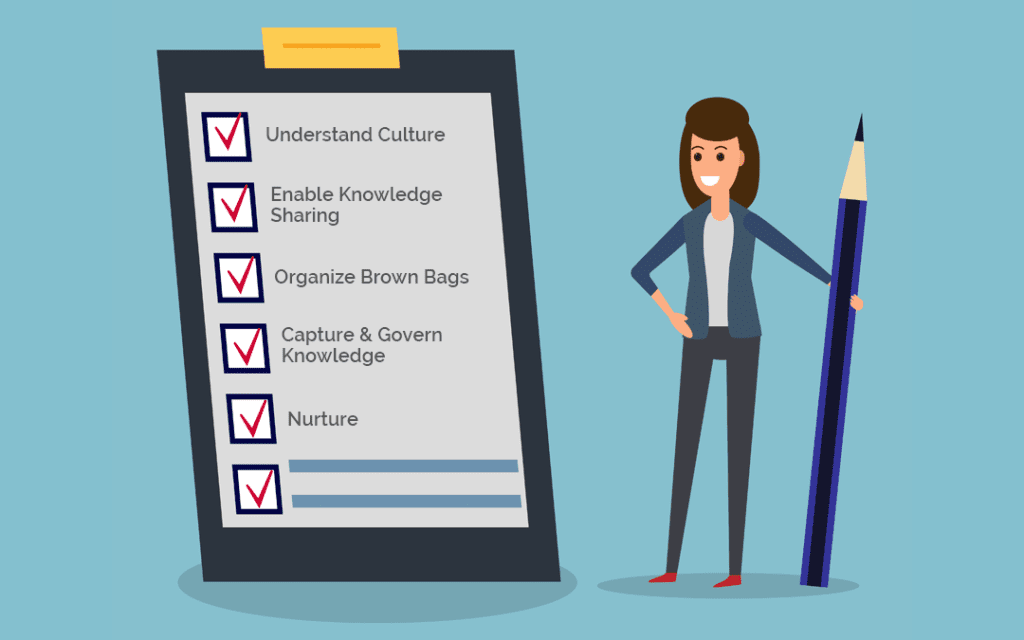What if your lead analyst wins the lottery tomorrow?
The scenario could play out in many ways. Maybe the analyst’s passion for the organization would inspire them to stay on for a short amount of time.
How would you use that time?
By learning every single thing you could about what the lead analyst knows.
Maybe they know a lot about a particular marketing campaign, about how to communicate effectively with one of their direct reports, or about the small decisions the team made when they developed their automated reporting framework. It’s likely they know a lot about all kinds of things.
The knowledge that supports your analytics likely resides with other roles as well, including:
- marketing
- front-end developers who participate in analytics implementations
- data/CRM roles, who might be responsible for maintaining some of the datasets used in analysis
- IT people responsible for overall governance
In a knowledge economy, the information in employees’ minds, from all roles and teams, is one of an organization’s greatest assets.
E-Nor works with well-known brands who establish phenomenal analytics and optimization practices. Even within successful analytics programs, we frequently encounter challenges stemming from a lack of documentation and isolated pockets of knowledge. These struggles are common across company size, vertical, and tech stack. There are many things you can do on your team, and more broadly within your organization, to stay ahead of knowledge-related pain points. By operationalizing a knowledge management practice, you can do even more than watch out for your organization – you can foster a more efficient and fun work environment too.
This post shares tips for making knowledge sharing a regular habit on your team.
How to Design a Knowledge Management Strategy
Understand Culture
In order to establish a change in habit on your team, you must understand the team’s culture. Do team members generally get along well? Do they already collaborate, help, and share knowledge with one another in any way (think: emails, Slack, instant messages)? Are there competitive vibes in your environment, and if so, do they motivate or detract from employee engagement?
Step back to consider the most palpable elements of your team’s culture. Pay close attention to the existing strengths, weaknesses, and hot-button issues alive in your environment. You can even make a list. As you design and roll our your knowledge management strategy, refer to your list and ask yourself:
- How will the strategy leverage our existing strengths?
- How will it help us improve our weaknesses?
- How might it trigger some of our hot-button issues?
If it could trigger many issues, reconsider your strategy. You’ll probably need to address all of those issues at some point in the future – if you hit them all at once, though, your strategy won’t have any room to breathe!
Enable Knowledge Sharing
Make it valued
How does your team define “valuable work”? You probably don’t have a definition written down. If you stop to think about it, you’ll likely see patterns.
- What type of work is valued?
- How can you tell when work is valued?
If knowledge sharing in any form is not currently valued, you need to change that to make knowledge sharing a habit. Subtle change can be powerful here. Next time you benefit from a team member’s Google Analytics annotation, working within your established norms, show you team you appreciate the annotation. Doing this over time, in the way that makes sense for your organization, will help foster a culture where knowledge sharing is valued. A culture where knowledge sharing is valued will inherently encourage individual team members to share more knowledge.
Organize brown bags
Knowledge sharing doesn’t have to be all about individuals sitting down and writing documentation for each other. Knowledge sharing is about connecting individuals, so why not make it a social activity?
A brown bag is a structured social gathering used specifically for sharing and transferring knowledge among teammates. The gathering is often called a “brown bag” because many organizations hold these gatherings over lunch. Of course, the logistics for your organization are entirely up to you.
In order to establish a sustainable brown bag practice, you’ll need to make some key decisions before you launch:
| Decision | Tip |
|---|---|
| What is our goal for brown bags? | Spend ample time articulating your overall goal before diving in. Refer back to it often as you make the rest of your decisions. |
| What should we call our brown bags? | There’s nothing stopping you from calling them “brown bags”. Or maybe there’s an engaging name that aligns with your brand? |
| When will our sessions be, and how often? | Sessions scheduled for a dedicated time slot help establish cadence and expectations. |
| How long will our sessions be? | One hour is ideal. If the structured session wraps up early, participants may continue learning if they use any remaining time to mingle and chat. |
How will we structure sessions?
| It’s likely brown bags will default to be presentation-style even if everyone agrees interactivity is best. If you’d like to see more interaction, your session leaders will likely benefit from guidance and coaching on how to lead discussions. This can evolve over time! |
| Who should be invited to the brown bags? | Brown bags are a great opportunity to foster cross-pollination across teams. Analysts, marketers, data scientists, IT folks, and front-end developers have a lot they can learn from each other! |
Who will be responsible for organizing brown bags? Organizing sessions entails:
| Identify one person to take the lead, to establish continuity and a sense of responsibility for the program. The organizer can certainly delegate tasks as needed. |
Find a way to capture & govern knowledge
Culture work is critical to establishing knowledge sharing habits. Technology and process are too! Once your team is empowered to share their knowledge, they need to know where and how to share.
Whether you have one dedicated knowledge sharing tool already, have a bunch, or need to start shopping, the following tips should apply:
- Remember everything you learned from thinking about your culture, and align your technology to your culture (not the other way around).
- Work with your team to establish a single, centralized location for mission-critical knowledge. This may mean migrating away from other tools, or aligning distinct tools with distinct purposes. Document and communicate decisions widely and often.
- Consider what templates, guidelines, training, and support your team needs to be successful in their knowledge sharing efforts. Listen for pain points – and seek them out proactively.
- Remember that governance isn’t achieved overnight. Your team may share information to the “wrong” places for months. That’s okay. Encourage them to re-share the information in your centralized location. After awhile, it will become habit (and they won’t want to keep sharing things twice!).
Nurture, nurture, nurture
A knowledge management strategy isn’t a one-and-done type of thing. Just like an analytics implementation, it has to be nurtured, evaluated, re-evaluated, and evolved over time to meet the needs of your organization. Make sure there is always at least one person on your team who is paying attention to the knowledge management strategy.
From Culture Change to Business Benefit
After understanding your culture, introducing gradual change, and implementing targeted knowledge management strategies, your team or organization will likely see efficiency gains, increased employee engagement, process optimizations, and smoother continuity in the case of staffing and role changes. Be prepared to surpass your own expectations!














